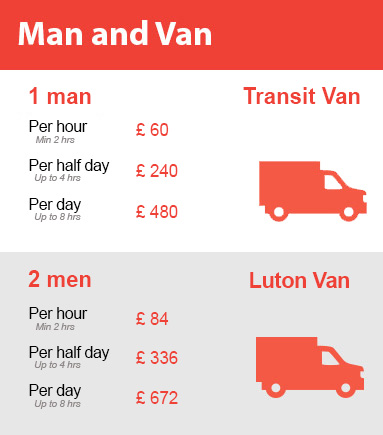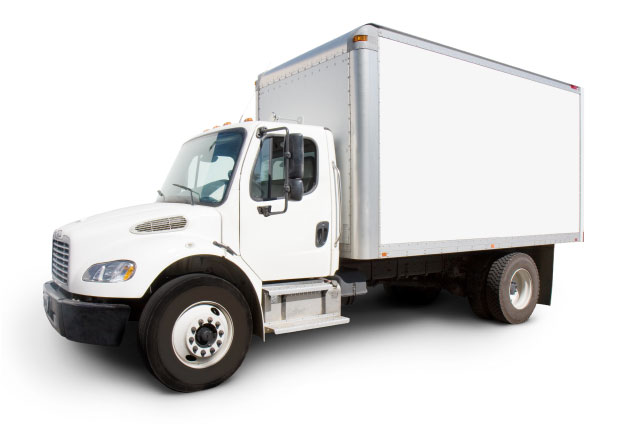Champion Solo Heavy Lifting: Effective Methods for Self-Sufficient Movers
Posted on 03/06/2025
Champion Solo Heavy Lifting: Effective Methods for Self-Sufficient Movers
If you're preparing for a big move or just need to rearrange hefty furniture at home, learning the art of solo heavy lifting is essential. Whether you're a seasoned do-it-yourself aficionado or a first-time self-sufficient mover, mastering safe and effective techniques will save you time, effort, and potentially, trips to the chiropractor. In this comprehensive guide, we'll explore the most effective methods, essential tools, and safety precautions for solo heavy lifting--empowering you to become a champion mover in your own right!

The Rising Trend: Why More People Are Moving Heavy Items Alone
The landscape of moving and heavy lifting has evolved in recent years. With the proliferation of online marketplaces, gig economy furniture sales, and a strong do-it-yourself culture, more individuals are attempting to handle heavy lifting and moving tasks alone. While hiring professional movers is convenient, being self-sufficient in these scenarios provides flexibility, cost savings, and a sense of personal accomplishment.
- Reduced moving costs
- Increased scheduling flexibility
- Greater control over personal items
- Boosted confidence and independence
- Opportunities to learn useful skills
However, lifting heavy items solo also brings unique challenges. It's vital to balance enthusiasm with preparedness--and that's where effective methods come in.
Understanding the Risks: Safety First for Solo Movers
Before you lift that couch solo, consider the most common risks involved in handling heavy loads alone:
- Back injuries and muscle strains
- Slips, trips, and falls--especially on stairs
- Damage to furniture, floors, or walls
- Pinched fingers and crushed toes
With these risks in mind, let's explore how you can maximize safety while championing heavy lifting independently.
Pre-Lift Preparation: The Solo Move Master's Checklist
Thorough preparation is half the battle won in any successful maneuver involving hefty loads. Here's a pre-lift checklist every self-sufficient mover should follow:
- Assess the Item: Size up the weight and balance. Is it manageable for one person? Be realistic.
- Clear the Pathway: Remove any obstacles and secure pets or children to avoid sudden accidents.
- Plan the Route: Consider tight corners, staircases, or doorways. Know your destination and any potential hazards.
- Wear Proper Clothing: Opt for non-slip shoes and avoid loose clothing that could snag.
- Warm Up Muscles: Gentle stretches can help reduce the risk of muscle strain.
- Gather Tools and Supplies: Review the section below for essential aids every champion mover should have.
Essential Tools: Upgrade Your Solo Heavy Lifting Arsenal
You wouldn't expect a knight to enter battle without armor--and neither should you attempt heavy lifting by yourself without the right equipment! Here are must-have moving tools for self-sufficient heavy lifters:
- Furniture Sliders: These are invaluable for effortlessly gliding couches, dressers, or appliances across floors.
- Forearm Forklifts or Moving Straps: These ingenious straps distribute weight evenly, allowing you to lift heavy items with less effort and reduced injury risk.
- Hand Truck/Dolly: A sturdy two-wheeled dolly transforms solo moving, making it easy to transport boxes, appliances, and even large pieces of furniture.
- Padded Gloves: Protects your hands from cuts and gives extra grip.
- Packing Tape & Stretch Wrap: Secure moving parts, prevent doors from swinging, and keep items together.
- Blankets & Cardboard: Useful for protecting surfaces and sliding objects over thresholds or stairs.
Bonus Tip: Build a DIY Toolkit for Solo Lifting Champions
- Leverage everyday items: Towels for sliding, yoga mats for protection, or even a rope and pulleys to create a makeshift hoist.
Champion Techniques: How to Move Heavy Items Without Help
Now to the crux of solo heavy lifting: method matters. Use these expert-approved methods to become a more efficient and safer self-mover.
1. Master the Art of Proper Lifting
- Bend Your Knees: Always squat down, keeping your back straight and head up.
- Keep Objects Close: Hold items as close to your body as possible to reduce strain.
- Push, Don't Pull: When sliding or moving an object on wheels, pushing is easier on your body than pulling.
- Use Core Strength: Engage your abdominal muscles and avoid twisting while lifting.
2. Use Leverage and Pivot Points
- Lever and Wedge: Slide a piece of cardboard under a corner, then wedge and tip the item to maneuver it over small thresholds.
- Pivot and Tilt: Stand a tall item (like a wardrobe) upright and gently "walk" it forward by tilting and shifting one end at a time.
3. Slide, Don't Lift (When Possible)
- Furniture Sliders: Place sliders under each corner or foot. Move the object smoothly across carpet, tile, or hardwood.
4. Disassemble and Lighten the Load
- Remove Drawers, Shelves, or Legs: Make large items manageable by taking them apart first.
- Empty Contents: Always move furniture and appliances without contents inside. This reduces weight and prevents messes.
5. Approaching Stairs and Doorways
- Stair Slides: Use a blanket or cardboard under the load and slide it one step at a time, carefully controlling descent.
- Angle Techniques: For doorways, stand longer items on end and pivot them through in an "L" shape.
6. Prioritize Rest and Listen to Your Body
- Take Breaks: Lifting and moving heavy items alone is marathonic--rest regularly to avoid fatigue and potential injury.
- Stay Hydrated: Muscles work best when hydrated.
Champion Solo Heavy Lifting: Common Mistakes to Avoid
You might feel like a moving superhero, but even champions make mistakes. Here's what to avoid during solo heavy lifting operations:
- Underestimating Weight: If in doubt, seek help or split the load.
- Rushing the Job: Hasty moves lead to injuries and damaged possessions.
- Ignoring Safety Gear: Skipping gloves or forgoing sliders is asking for trouble.
- Poor Route Planning: A small obstacle can cause big delays or accidents.
- Not Taking Apart Items: Don't make things harder on yourself--disassemble where possible.
- Lifting With Your Back: Repetition of poor form causes chronic injuries.
Going Pro: When to Hire Help or Call a Friend
While solo moving is empowering, never risk your health or safety for the sake of self-sufficiency. If you encounter these scenarios, consider calling in reinforcements:
- High-Risk Items: Pianos, safes, large appliances, or anything over 100 lbs is best moved with help.
- Steep or Many Stairs: Stairs add complexity and danger.
- Unstable or Expensive Objects: Don't risk irreplaceable antiques or custom furniture.
- Medical Conditions or Recent Injuries: Prioritize well-being always.
Champion's Guide: Quick Reference Table for Solo Movers
| Task | Recommended Tool/Method | Key Advice |
|---|---|---|
| Sliding across floors | Furniture sliders or towels | Keep items close; push rather than pull |
| Lifting boxes or small furniture | Moving straps/Hand truck | Lift with legs, not back; keep pathway clear |
| Moving up/down stairs | Blankets, cardboard, hand truck | Move one step at a time; consider a helper for very heavy items |
| Disassembling furniture | Screwdriver, wrench | Label parts and screws in bags for easy reassembly |
| Appliances | Appliance dolly, straps | Disconnect power; protect floors and doorways |

Top 7 Pro Tips for Successful Self-Sufficient Moving
- Invest in Quality Tools: Prioritize sliders, a sturdy dolly, and straps. Cheap equipment can break and cause injuries.
- Plan in Sections: Tackle one item or room at a time to avoid overwhelming yourself.
- Protect Floors and Walls: Prevent costly repairs by padding surfaces and watching sharp corners.
- Wrap and Secure Movables: Use stretch wrap or tape to keep doors and drawers closed during transit.
- Mind Your Posture: Stand tall, engage core muscles, and avoid twisting while carrying loads.
- Maintain Communication: Let someone know your moving plans--it's important for safety if you run into trouble.
- Celebrate Your Success: Take pride in your achievements! Reward yourself with a break, meal, or relaxation after a successful move.
Conclusion: Empower Your Moving Journey
Becoming a champion at solo heavy lifting isn't just about strength--it's about planning, preparation, and smart technique. Every self-sufficient mover can benefit from making safety and efficiency priorities. Follow these time-tested methods and recommended tools, and you'll not only safeguard your body and belongings, but also gain the confidence to tackle future heavy lifting projects with ease.
Next time you face that daunting couch, dresser, or desk, remember--heavy lifting by yourself is entirely achievable when approached like a pro. Happy lifting, champion!





